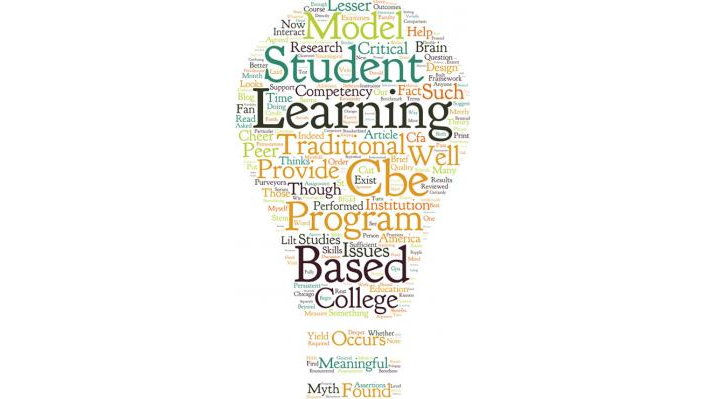
As a Chicago Cubs fan, I don't often have something to cheer about; however, I found myself doing so last month when I read the blog post on the myths of competency-based education (CBE). In this article, a brief framework was provided to help convince anyone who thinks that CBE does not provide broad, intellectually stimulating experiences through faculty interactions to reconsider. Though this article addresses many issues, some criticisms of CBE cut even deeper.
Beyond questioning what students are learning, there are those who suggest that the learning is somehow lesser than what occurs in a traditional model. Most purveyors of the benefits of CBE have likely encountered this argument — if not in print then certainly in person. In fact, I have been asked the question enough times to note that there seems to be an archetypal lilt that squarely emphasizes the penultimate word in the phrase "But how is that learning?" — thus phonologically as well as verbally separating "whatever" occurs in CBE from learning.
Whether such assertions stem from misconceptions about what CBE is (such as confusing it with credit-by-exam) or from ignorance is not known. Such criticisms may even be a byproduct of the fact that — with the manifold permutations of CBE that now exist across hundreds of schools — issues with one institution's particular model may ripple out as indictments of CBE in general.
Indeed, given the paucity of empirical research that directly examines what competency-based learning looks like vis-à-vis traditional models, any assertions of lesser student learning in CBE programs are based not in evidence but conjecture. As purveyors of CBE await support from peer-reviewed studies, any discussion of learning should be framed in terms of 1) the design of the program (i.e. is it research-based?) and 2) agreed upon outcomes.
Designing Learning Opportunities with the Brain in Mind
I find that it is helpful to turn to best practices in pedagogy and learning theory to determine whether curricular and instructional approaches are sufficiently grounded in the literature (i.e. research-based), that they are likely to yield learning that, though different, is of similar quality to what occurs in a traditional classroom setting. In this vein, it is good to begin by considering how learning actually occurs — "behind the scenes" — at the neurological level.
In his seminal work, The Organization of Behavior, Donald Hebb laid the foundation upon which modern neuroscientific theories of learning rest. He put forth that the long-lasting neurological changes required for meaningful and applicable learning required persistent and repeated activation of the brain. This now eponymous postulate, which is supported by studies in both animals and humans, reinforces the importance of challenge and, to some extent, struggle for meaningful learning. This is a framework upon which the College for America (CfA) CBE model is built: that students may need flexible time to interact with concepts and material repeatedly. Rather than merely pass from assignment to assignment, CfA students must re-visit projects that are not yet mastered. Within the brain, this persistence likely results in the student re-engaging, strengthening, and refining existing neural networks; a process we merely call "learning."
Keeping Pace with Traditional Programs
In order to make comparisons about the degree of learning, there must be not only some measure of quality, but some benchmark against which a comparison can be made. GPA could be used as a proxy for learning, but there are well-documented issues with course-to-course, instructor-to-instructor, and college-to-college variability, as well as grade inflation. Thus, though not ideal, standardized assessments of skills that are agreed to be desired outcomes of post-secondary education provide a better way of comparing student performance across institutions.
Indeed, in a preliminary examination of how students from the competency-based model at College for America fared on an externally-administered, standardized test, we found that they performed as well or better on many higher-order skills, such as critical thinking, than a majority of their peers sampled from more than two dozen traditional institutions. Though these early results are encouraging, they still do not fully capture the depth and breadth of learning that we see our students achieve. Perhaps the proliferation of CBE programs will prompt the development of new assessments that will measure and benchmark what meaningful learning looks like in the 21st century.
I have outlined how learners from the CBE program at College for America performed relative to those in traditional programs and have provided the neurocognitive basis for why properly designed CBE programs should yield learning that is as least as robust and meaningful as is found in the traditional academy. But misconceptions can be stubborn. Hopefully the emergence of methodologically-sound, peer-reviewed studies will be sufficient to dispel the myth of lesser learning in CBE programs. That will be something to cheer about . . . at least until the Cubs win it all.
Jerry Rekart is director of research and analytics at Southern New Hampshire University.
